Recently updated on September 19th, 2025 at 04:44 am
As Mark Twain once famously wrote, “India is the one land that all men desire to see, and having seen once, by even a glimpse, would not give that glimpse for all the shows of all the rest of the globe combined.” And nowhere does that sentiment ring truer than in Rajasthan – India’s largest state, set in the northwest bordering Pakistan – where mighty forts rise from deserts like mirages, jewel-toned cities bustle with life, and daily rhythms influenced by centuries of royalty.
Named the Land of Kings, Rajasthan was shaped by Rajput warrior clans and Mughal emperors whose legacy lives on in eight UNESCO-listed cultural sites and grand cityscapes. The land they’re set in is full of contrasts, too – from the golden Thar Desert to the craggy Aravalli and Vindhya ranges, wildlife-rich jungles like Ranthambore, and more than 45 sparkling lakes.
Ready to experience this iconic region of India for yourself? Get your bearings with this handy map, and read on for just a few of the many reasons why you should visit Rajasthan.
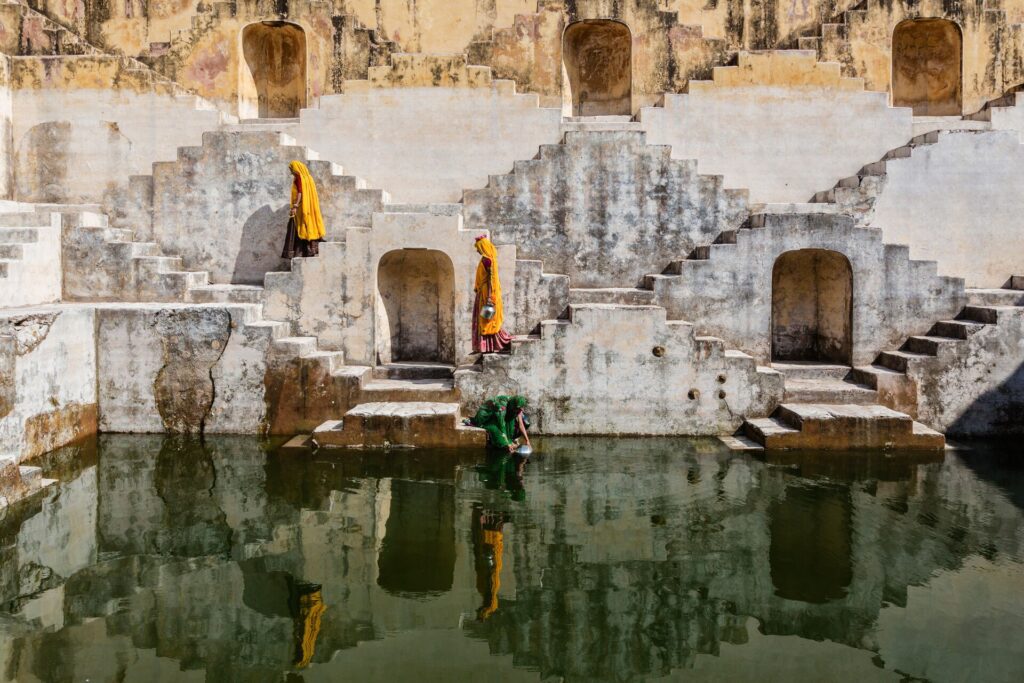

1. Explore Majestic Forts and Palaces
Nowhere else in India shows off its royal heritage quite like Rajasthan, with its awe-inspiring spread of citadels and palaces: statements of power, all built to impress, protect and endure. And for many travellers, they’re more than historic landmarks – they top the list of reasons why you should visit Rajasthan.
At least 75 forts are scattered across the state, ranging from desert outposts to hilltop strongholds. Six of them – Amber, Chittorgarh, Gagron, Jaisalmer, Kumbhalgarh and Ranthambore – are collectively inscribed on the UNESCO World Heritage List as the Hill Forts of Rajasthan, all revered for their ingenious defensive designs and seamless integration with the surrounding landscape. The most visited is Jaipur’s Amber Fort: a 16th century Rajput complex prized for its Hindu-Mughal fusion architecture, mirror-studded halls, elephant-accessible ramparts and intricate carvings.
The state’s also home to more than 30 major palaces, most built between the 16th and early 20th centuries by Rajput rulers or under Mughal patronage. Of them all, Udaipur’s City Palace – a sprawling complex begun in 1559 by Maharana Udai Singh II overlooking Lake Pichola – and Jaipur’s honeycomb-façade Hawa Mahal (“Palace of Winds”) top the must-see list.
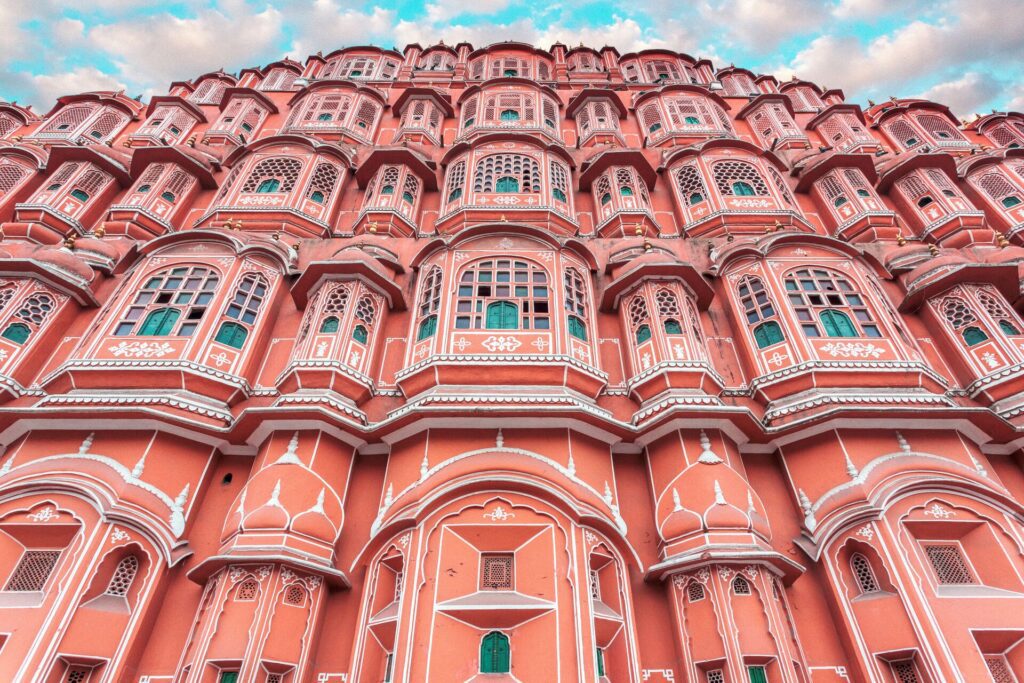

2. Experience Rajasthan’s Vibrant Culture and Festivals
Rajasthan’s culture is an intricate fusion of Rajput and Mughal traditions, religious influences, and modern creativity. While the population is predominantly Hindu, the state has significant Jain and Muslim communities, and is also home to the Bhil, Garasia and Meena peoples, especially in the south and west. You can experience their various influences in a more formal setting at cultural hubs like Jawahar Kala Kendra in Jaipur (a multidisciplinary arts centre), Bagore Ki Haveli in Udaipur (a restored 18th century mansion hosting folk performances), or the Albert Hall Museum, which houses centuries of Rajasthani textiles, sculpture and handicrafts.
Year round, festivals bring this rich cultural tapestry to life. Holi (March) is celebrated with music and street parties where locals cover themselves – and each other – in clouds of colourful powders. Gangaur (March/April) honours Gauri, a form of the goddess Parvati, with elaborate processions through Jaipur and Udaipur. There’s also Diwali (October/November), the festival of lights, when palaces and homes are illuminated with candles, fireworks and flowers. Then, later in winter, the Jaisalmer Desert Festival transforms the Thar’s golden plains into a playground of folk music, dance performances, turban-tying contests and moustache competitions – just some of the ways you can experience Rajasthan’s inclusive heart and colourful soul.
Adventure World’s Authentic Rajasthan holiday is a 14-day immersion in the Royal State’s highlights, featuring everything from luxury and family-run accommodation to MAKE TRAVEL MATTER® cultural experiences.
3. Indulge in Rich and Spicy Rajasthani Cuisine
Local hospitality is rooted in the Sanskrit maxim “Atithi Devo Bhava”, meaning “The guest is god” – so memorable dining experiences are served here on a platter. And Rajasthani food is distinctive: unlike the wetter curries found elsewhere, many local dishes are dry or slow cooked with minimal liquids (think, thick gravies, stir-fries and roasted fare enriched with ghee, yoghurt and spice blends). Dried lentils, millets, curds and preserved meats form the backbone of the cuisine, with goat, chicken and even freshwater fish from desert lakes providing protein, although vegetarian fare still dominates. Sink your teeth into local favourites like dal baati churma (lentils with baked wheat dumplings), laal maas (red mutton curry), and ker sangri (stir-fried beans and berries). You’ll find these everywhere from family-run dhabas to palace restaurants in Jaipur, Udaipur and Jodhpur, including acclaimed fine diners like 1135AD and Suvarna Mahal. For street food, head to Jaipur’s Bapu Bazaar or Jodhpur’s Clock Tower Market, where you can snack on kachori (deep-fried pastries filled with lentils), mirchi vada (fried green chilli fritters), and saffron-rich sweets like ghevar and mawa kachori.
Hungry for an authentic foodie experience? Time your trip to coincide with the Rajasthan International Folk Festival in Jodhpur (October), a UNESCO-supported cultural event where music, dance and regional fare share the spotlight, or ask Adventure World’s Destination Experts about our cooking and culinary experiences that MAKE TRAVEL MATTER®.
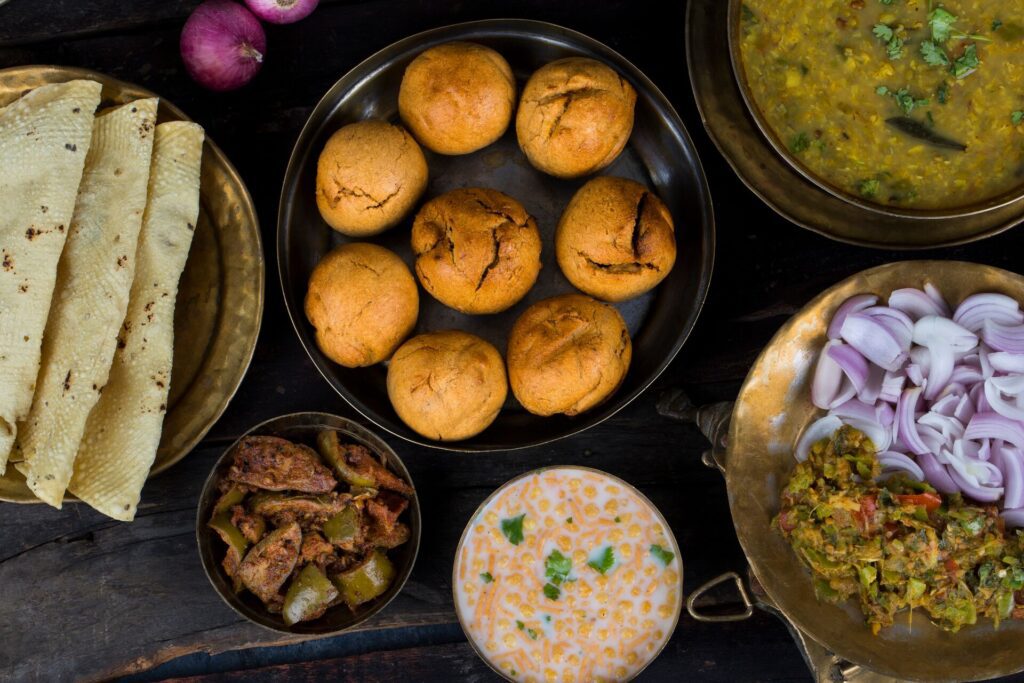

4. Discover Stunning Landscapes and Wildlife
The state’s wild places are just as legendary as its forts and palaces, spanning everything from lunar-like desertscapes to lakes and lush forests. Mighty rivers like the Chambal, Banas and Luni cut through parched terrain to feed wetlands and desert oases – the most famous being Gajner, once a royal hunting retreat, now a sanctuary for birds and blackbuck antelopes. Likewise, photogenic lakes like Sambhar (India’s largest inland salt lake), Pushkar, and the tranquil Fateh Sagar are prized for their birdlife as well as their beauty.
And five national parks invite nature lovers to explore Rajasthan’s wildest side. Ranthambore National Park spans more than 1,300km² of forests, meadows and rocky ridges, and is one of the best places in India to spot wild tigers: around 80 live here, alongside leopards, sloth bears, and more than 300 bird species.
Further east, Keoladeo Ghana National Park near Bharatpur is a UNESCO World Heritage Site and vital wetland habitat with over 370 bird species, including sarus cranes, painted storks and winter migrants like greater spotted eagles, Siberian rubythroats and bar-headed geese. You might also spot golden jackals, striped hyenas and, if you’re super lucky, elusive fishing cats.
Meanwhile, in the state’s southeast, boat safaris on the Chambal River offer a rare chance to spot endangered gharials, Gangetic river dolphins and a variety of migratory birds along one of India’s cleanest river ecosystems.
Keen to eye a wild tiger? Our 10-day Wildlife of North India journey takes in three iconic wildlife hotspots, including Ranthambore and Corbett national parks, and the Chambal River region.
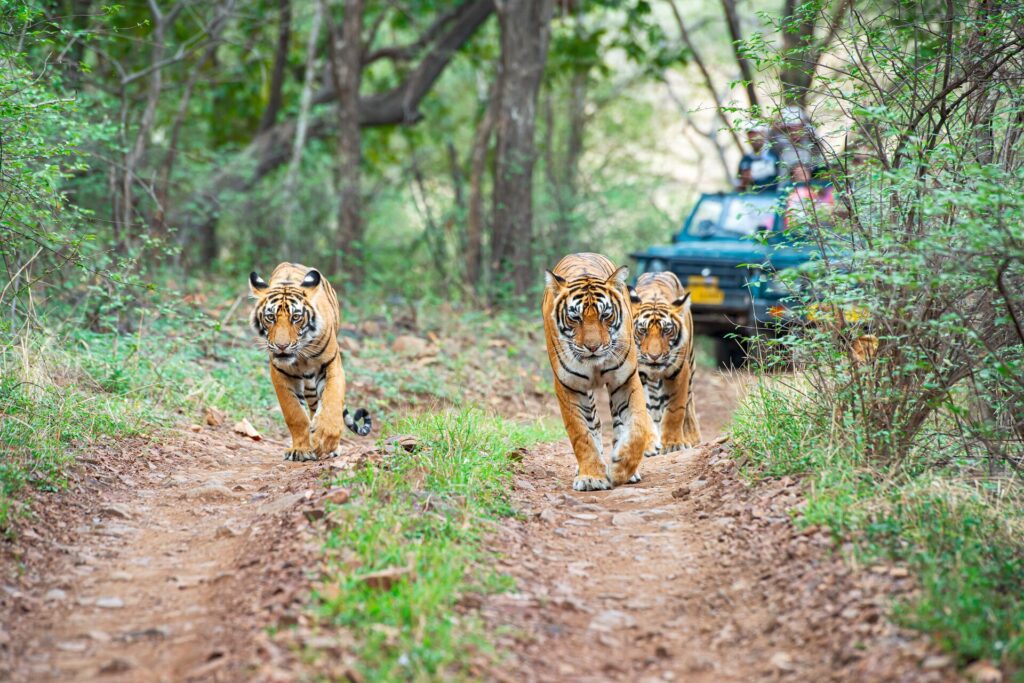

5. Enjoy Unique Heritage Hotels and Royal Hospitality
Evolving through centuries of regal protocol and refined under the British Raj, royal hospitality is characterised by personal butler service, formal welcomes, and almost pathological attention to detail. You might be greeted by a durban (a gatekeeper in full livery), attended to by a wala (a staff member trained in traditional courtly customs), or even hosted by royal descendants – many of whom have opened their ancestral homes as heritage hotels. Such stays are world-famous not just for their opulence, but because they embody a blend of Rajput legacy and colonial-era luxury. At Mihir Garh, a purpose-built desert fortress south of Jodhpur, the accommodation reimagines a traditional mud palace with domed turrets, hand-carved fireplaces, and just nine extravagant suites, each with its own plunge pool or jacuzzi. At Dev Shree Deogarh, the hosts welcome guests into a lakeside haveli (a traditional Rajasthani mansion) filled with family heirlooms, pillared verandahs and frescoed ceilings for an intimate glimpse into aristocratic life. Rawla Narlai, once a 17th century royal hunting lodge, now invites guests to feast in a restored stepwell and relax in elegant rooms surrounded by village life. And at Six Senses Fort Barwara – a 700-year-old fortress near Ranthambore – soaring ramparts and original battlements frame world-class wellness offerings in one of Rajasthan’s most dramatic heritage conversions.
Our 13-day Royal Rajasthan journey reveals the iconic attractions of the Golden Triangle and Rajasthan, stays in luxe accommodations and palaces, and explores by foot, private vehicle, train, boat and even hot air balloon!
6. Visit Colourful Cities Like Jaipur, Jodhpur, and Udaipur
Rajasthan’s three major cities each have their own take on royal heritage and daily life. Jaipur, the state’s largest city and also its capital, is part of India’s renowned Golden Triangle alongside Delhi and Agra, and is famously known as the Pink City thanks to the terracotta tones of its old city facades. Exploring its Amber Fort, City Palace, Rambagh Palace, and Hawa Mahal is an immersion in its layered heritage, while the UNESCO-listed Jantar Mantar is an 18th century astronomical complex designed for measuring the heavens with the naked eye. And in between meeting locals at Tripolia Bazaar and Johari Bazaar, you can deepen your connection to the community through a MAKE TRAVEL MATTER® experience with the Pink City Rickshaw Co – a standout local social enterprise employing women from low-income households to navigate you through Jaipur’s vibrant lanes in eco-friendly, custom-designed e-rickshaws.
Further west, Jodhpur rises from the edge of the Thar Desert in a swathe of indigo – the Blue City, so called for its traditional Brahmin homes washed in blue lime. Founded in 1459, it’s now Rajasthan’s second-largest city, with the Mehrangarh Fort and Umaid Bhawan Palace headlining its highlights.
In the south, Udaipur is the Lake City of Rajasthan, ringed by the Aravalli Hills and set beside a string of lakes. The Lake Palace, now a luxury hotel floating on Lake Pichola, was once a summer retreat for the Mewar royals. Along the same shores, the City Palace – still home to the Maharana of Mewar, India’s oldest surviving royal dynasty – adds to the old-world elegance of the city. Further afield, Bikaner, Bundi, Mount Abu, and Jaisalmer are also well worth a scenic detour.
Our 7-day Authentic Golden Triangle holiday, you’ll discover all the highlights of Delhi, Agra and Jaipur – including the Taj Mahal, Humayun’s Tomb, the Wildlife SOS Elephant Conservation Centre, and more.
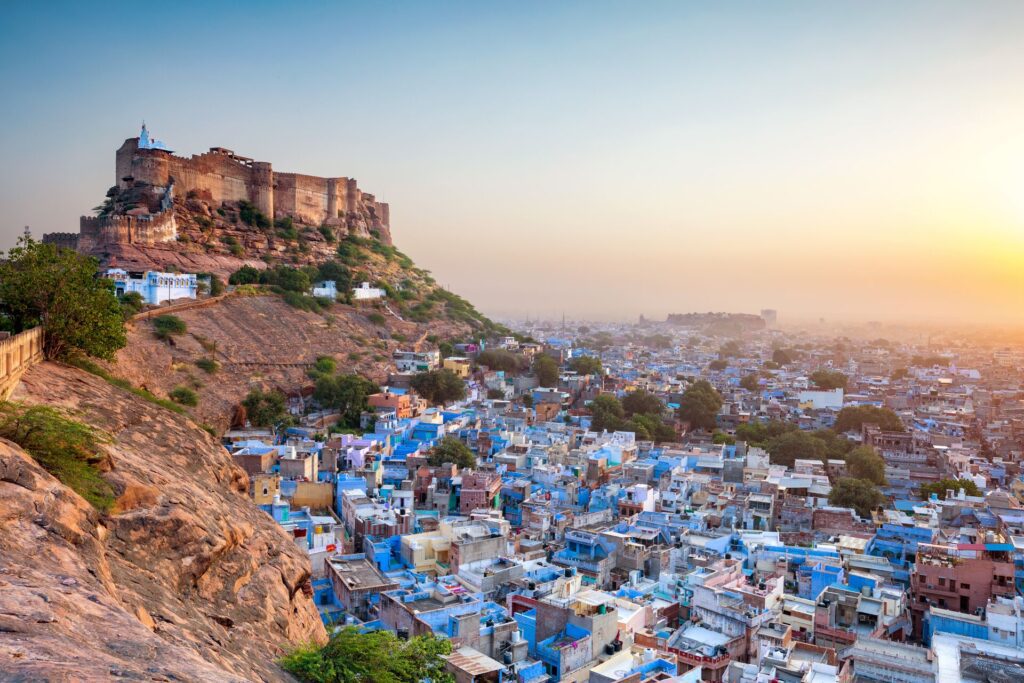

7. Shop for Handicrafts, Textiles, and Local Treasures
Rajasthan’s ancient artistic traditions continue to weave through everyday life, making it one of India’s best places to pick up authentic handcrafted pieces. Look out for intricate block-printed textiles, mirrorwork embroidery, blue pottery, hand-woven dhurries (rugs), leather mojari shoes, gemstone-studded silver jewellery, and carved wooden décor. Each piece is shaped by regional heritage and the availability of local materials: think accessories made from camel leather in desert towns, or vibrant tie-dye (bandhani) saris produced using time-honoured methods.
Jaipur is especially renowned for its jewellery, gemstones, pottery and hand-block printing; head to the bazaars around Badi Chaupar and Tripolia for standout finds. In Jodhpur, explore the old city for embroidered jootis (traditional slip-on shoes), antiques, and ornately carved wooden furniture, while in Udaipur, it’s worth keeping an eye out for detailed miniature paintings and papier-mâché sculptures.
Bargaining is customary in street markets, but prices are typically fixed in government emporiums and boutiques. For authenticity and ethical sourcing, stick to artisan cooperatives or state-run outlets like Rajasthali (Jaipur) or Shilpgram (Udaipur), where proceeds directly support local craftspeople.
8. Witness Architectural Marvels Like Stepwells and Temples
Rajasthan’s spiritual and architectural traditions are etched into its thousands of temples and stepwells – many centuries old, and some still in use. Stepwells (baoris) are deep, often ornately carved wells built from around the 6th century onwards, designed not just to store water also serving as community gathering places. Among the most photogenic is Chand Baori in Abhaneri – a 10th century site with 3,500 symmetrically stacked steps. Other picturesque examples include Rani Ji Ki Baori in Bundi, and Panna Meena Ka Kund, near Jaipur.
Temples are equally prolific across the state, with more than 25,000 dedicated to a range of deities. Don’t miss the 15th century Ranakpur Jain Temple, celebrated for its 1,444 intricately carved marble pillars, or the 9th century Harshat Mata Temple, which offers a rare glimpse into early Rajasthani forms of goddess worship. Visitors are usually welcome at most temples, but make sure you dress modestly, remove your shoes before entering, and avoid photographing sacred areas unless signage or staff make it clear it’s permitted.
Relax in some of India’s finest luxury hotels, go wild in Ranthambore National Park and experience the Taj Mahal at sunrise on our nine-day Taj & Tigers holiday.
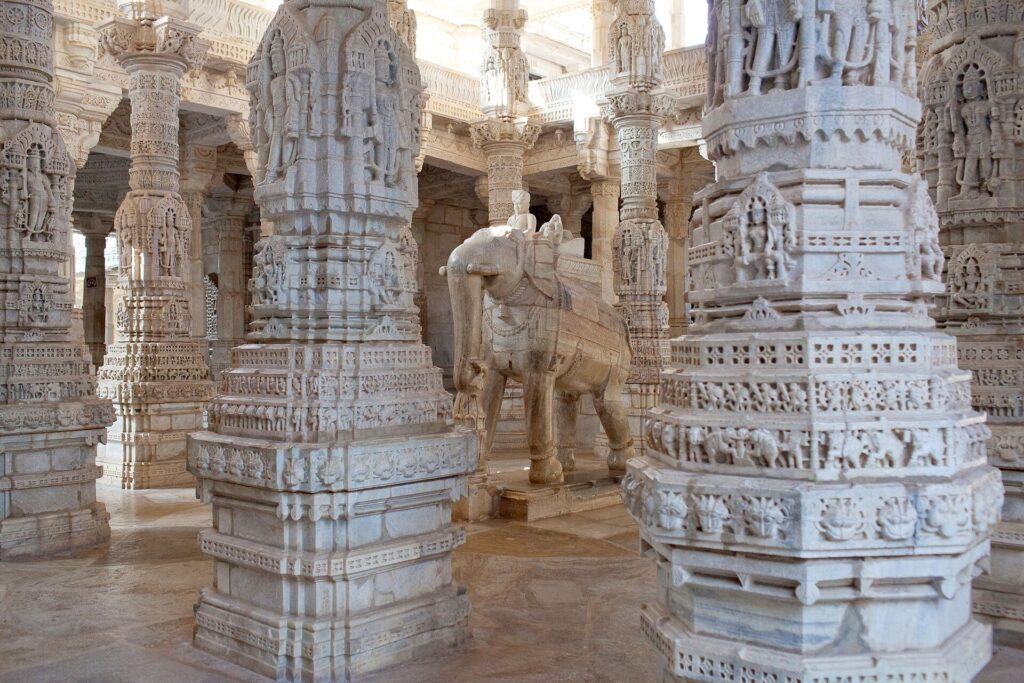

9. Explore Lesser-Known Gems Like Ghost Towns and Villages
Rajasthan’s ever-unfolding cultural heritage extends into a handful of abandoned settlements and lesser-known villages that once bustled with life. In the Thar Desert, Kuldhara is one of Rajasthan’s most intriguing ghost towns – once home to Paliwal Brahmins, who are said to have vanished overnight in the early 19th century, its crumbling sandstone homes and streets frozen in time near Jaisalmer. Nearby, Lodurva – the former capital of the Bhati Rajputs – is another atmospheric site, with its Jain temples partially restored.
East of Jodhpur, the small village of Osian is known for its cluster of 8th–12th century temples – now quiet, but once part of a thriving trade centre. And Bhangarh is often described as India’s most haunted site. Built in the 17th century and abandoned soon afterwards, it is protected by the Archaeological Survey of India and has restricted after-dark entry for safety reasons. Meanwhile, lesser-known Shekhawati villages like Mandawa and Nawalgarh feature haveli-lined streets and fading frescoes from Rajasthan’s merchant heyday, offering an intriguing cultural immersion away from the crowds.
10. Rajasthan is Perfect for First-Time or Winter Travel
Planning your first trip to India? Rajasthan is the place to start. In many ways, the state offers a taste of everything that makes the country so memorable – from grand palaces, bustling markets and ancient temples to desert landscapes, wildlife sanctuaries and traditional craft-making communities – but all within manageable, easy-to-navigate distances.
It’s also well connected by a long-established tourism network. The drive from Delhi to Jaipur takes about six hours; express trains are slightly faster, and multiple daily flights cover the route in around an hour. Once in Rajasthan, you can travel between cities by private vehicle, train or short domestic flights. English is widely spoken in tourism settings, and signage, infrastructure and services are generally reliable, making it a straightforward destination for first timers.
And winter (November to February) is the ideal time to visit. Daytime temperatures typically range from 18°C to 27°C, humidity is low, and rainfall is rare – perfect for sightseeing and outdoor adventures. Compared to the scorching 40°C-plus days of summer, the cooler months are far more comfortable.
But whenever you choose to travel – and whether it’s your first visit or your fifth – Rajasthan offers a vivid glimpse into the very heart of India: the kind Mark Twain rightly believed no traveller could ever forget.
